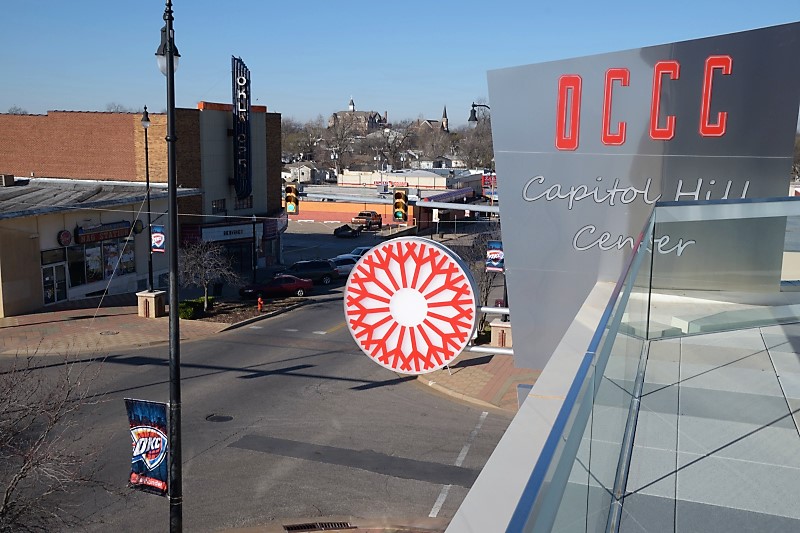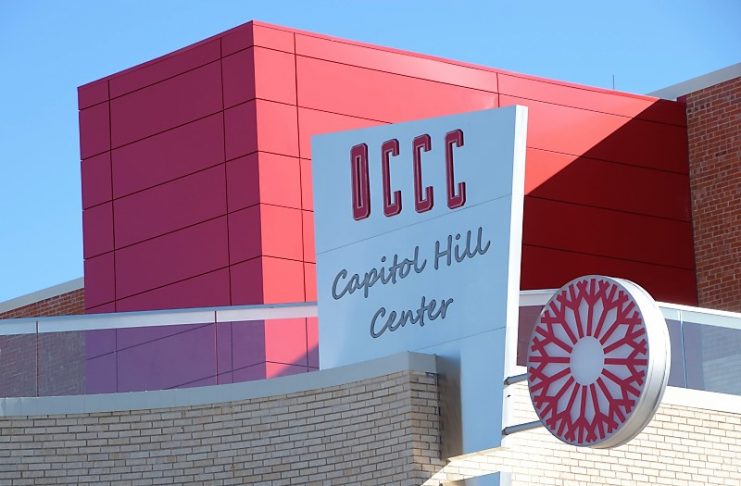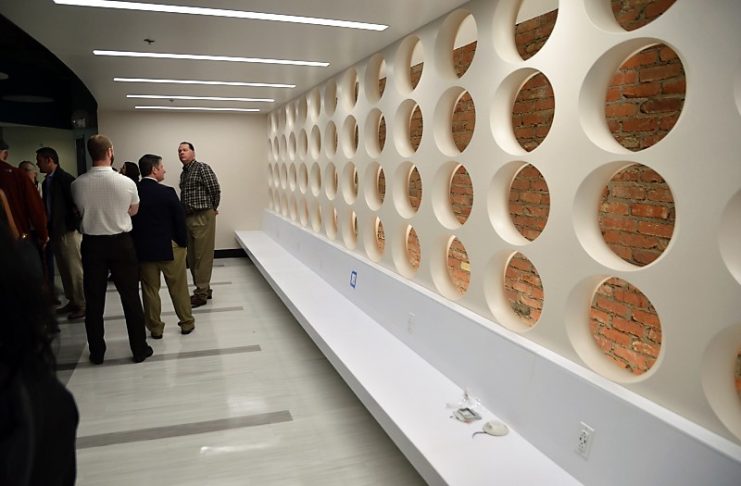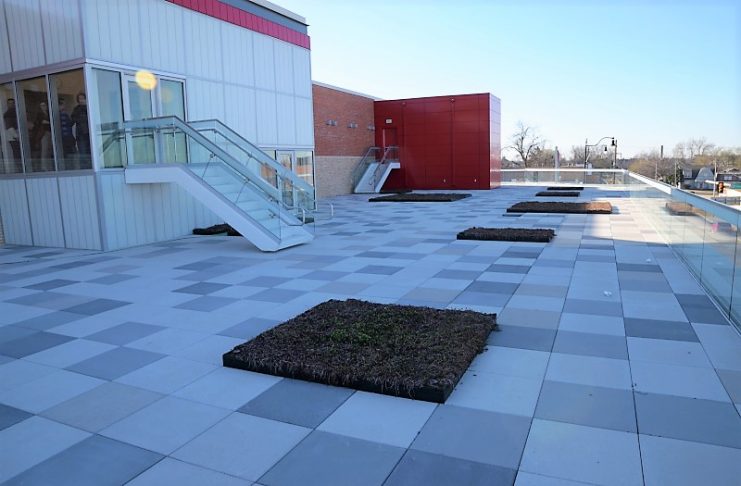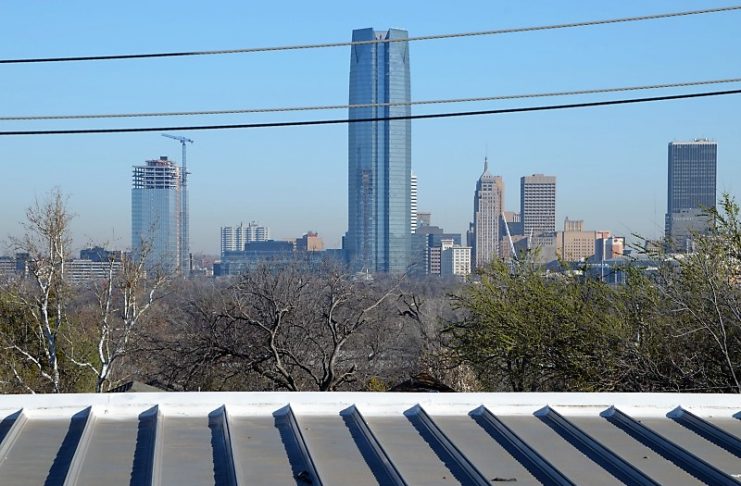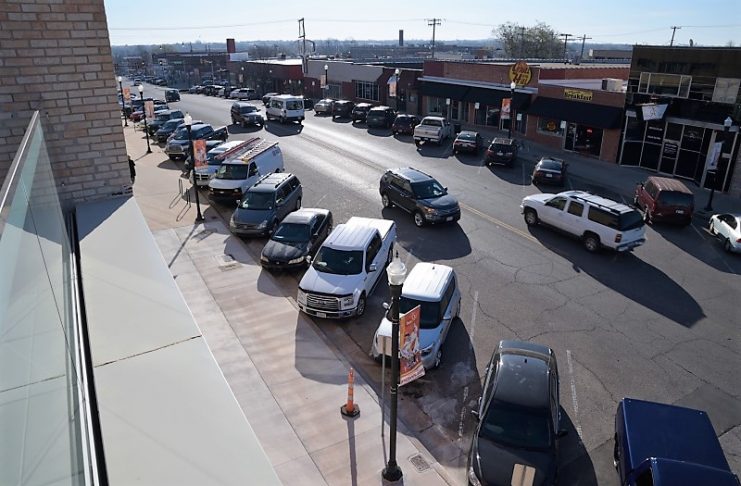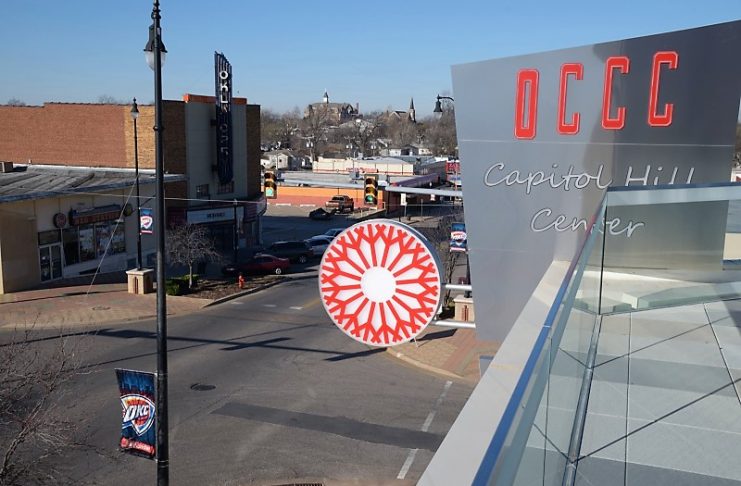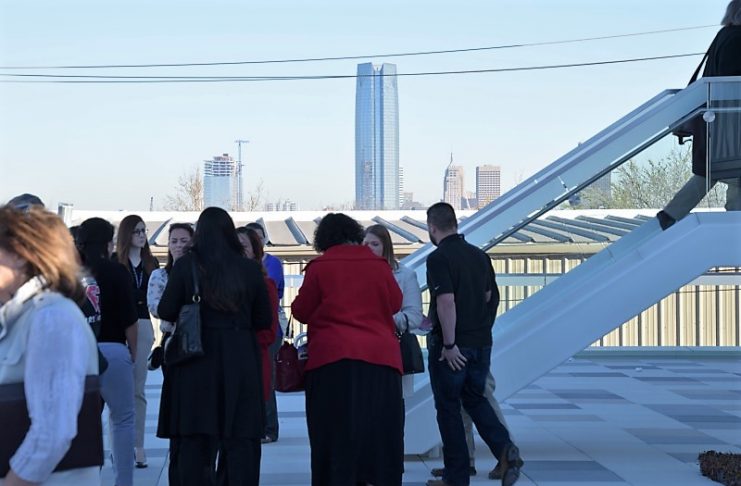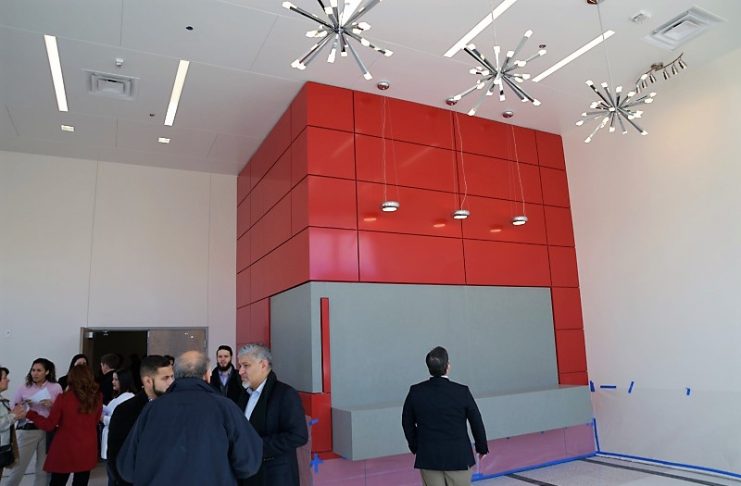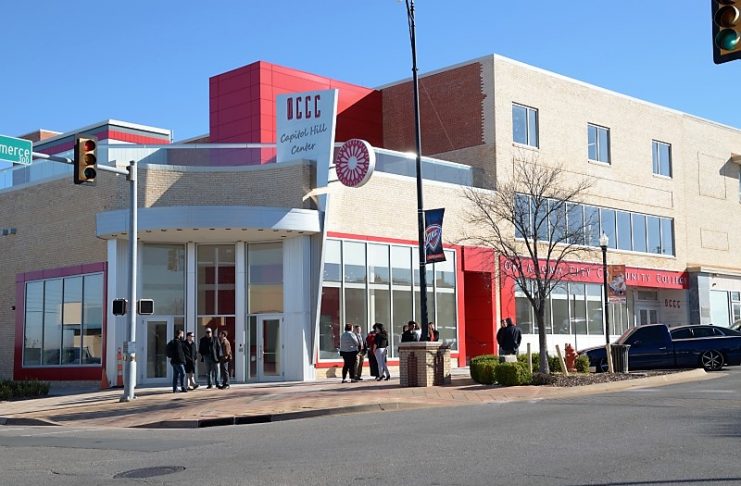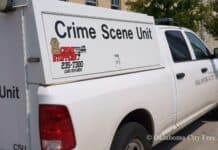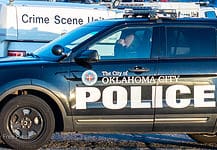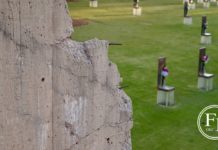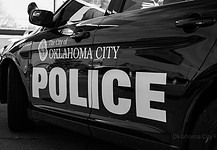Last Updated on March 8, 2017, 5:06 PM | Published: March 3, 2017
For more photos see the gallery at the bottom of this page
Oklahoma City Community College is investing around $8 million overall in the future of the historic, but often neglected Capitol Hill retail area. That part of the south side of Oklahoma City dates back to 1904, three years before statehood.
The OCCC main campus is near SW 77th and S. May Avenue in the far southwest part of Oklahoma City.
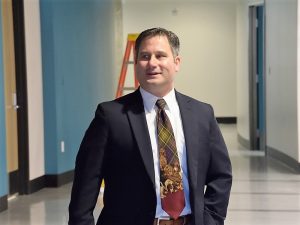
Alan Dale, acting director of community outreach and development for OCCC, took the Capitol Hill Civic Group through the building Thursday as crews worked to complete the current phase of the construction project.
He told Free Press the heavy investment in the oldest part of Capitol Hill is because OCCC “never lost the vision” of serving the south side of Oklahoma City.
“And as they have moved forward…,they continued to understand our role here and our job here is to serve the community,” said Dale.
He told Free Press that when they move into the new center they will increase their capacity “by 100 percent.”
The increased activity in the once stagnant area is a part of renewed interest. Investment dollars are starting to move south of the Oklahoma River.
One example: The Metropolitan Library System is rebuilding its Capitol Hill branch with the bones of an earlier 1950s branch building just one block south because the location is considered ideal.
Demographics
The college has made a heavy commitment to serving the Hispanic culture that has been growing in that part of Oklahoma City.
An OCCC study from 2016 based on the last U.S. Census in 2010 showed that 17.2 percent of Oklahoma City’s population identified as Hispanic. Most were within a five-mile radius of the intersection of SW 25th Street and Walker, just one block away from the new center.
Most significantly, within a one-mile radius of that intersection, 67.4 percent identified as Hispanic.
With the transformation of neighborhoods on the south side to Hispanic the average age of the population has gone down significantly as the count of school-age children has gone up.
Over the last five years Oklahoma City Public Schools have had to scramble each year to find new space as each of their elementary schools was packed.
So, the location only one block away from that intersection was ideal for the college to continue to reach out even more to such a significant population on the south side.
Current phase
The current Phase II involves finishing out the first floor and rooftop terrace of the former Katz Drug on the corner of SW 25th and Hudson, and the former Langston’s next door to the east. The two building have been incorporated into one unified facility.

The first floor will house offices, classrooms and a large multipurpose community meeting room. Students will enter for classes through one door on the south and the former dramatic Katz Drug corner entryway will be used for the community meeting room.
Dale said once Phase II is completed, they will move their English as a Second Language and GED courses in immediately from their current crowded center down the street in The Well United Methodist Church.
Then in the fall, they will add six regular credit courses in the building, four in the morning and two in the evening.
He said OCCC has several concurrent courses being held at Mount St. Mary’s HS this year and the added facility so close will help boost enrollment.
They will start on Phase III sometime in the future. It will involve completing a part of the basement, the second and third floors.
Rooftop
The rooftop terrace gives a dramatic view of the surrounding city due to the geography of the block between Hudson and Harvey. That part of SW 25th Street is the crest of one of the hills overlooking the Oklahoma River below and the core of downtown which sits in the old river bottom.

From the rooftop one can clearly see downtown, Wheeler Park and Mount St. Mary’s High School which sits atop the next hill to the west.
Walk to the south end and one can look up and down the historic Capitol Hill shopping area.
Background
On Phase I alone, OCCC spent 3.3 million basically to get to “go.” That got them a sound envelope within which to start fitting new floor modifications and new walls.
The City of Oklahoma City contributed heavily to Phase I. August 2015 the Oklahoma City Council gave OCCC the $3 million they requested from the downtown TIF to get the college through Phase I.
The two original buildings were built sometime in the late 1940s and have only received superficial upgrades to the interiors over the decades. As is the case with many older buildings, there was a dire need for asbestos removal and heavy structural repairs.
Katz Drug Company started in Kansas City and established stores in Oklahoma City from the 1930s up through the 1950s.
The best known location was at Main and Robinson downtown because its lunch counter was where Oklahoma City’s civil rights sit-in actions began in the 1960s.
Both the older downtown location and the one in Capitol Hill had recessed corner doors designed into their original construction. They were meant to promote the stores as meeting places.
The corner door feature will continue to serve a welcoming role for the community meeting room of the new center.
Langston’s continues with stores in historic packing town at S. Villa and Exchange and at I-240 and S. Shields.
Founder, publisher, and editor of Oklahoma City Free Press. Brett continues to contribute reports and photography to this site as he runs the business.
